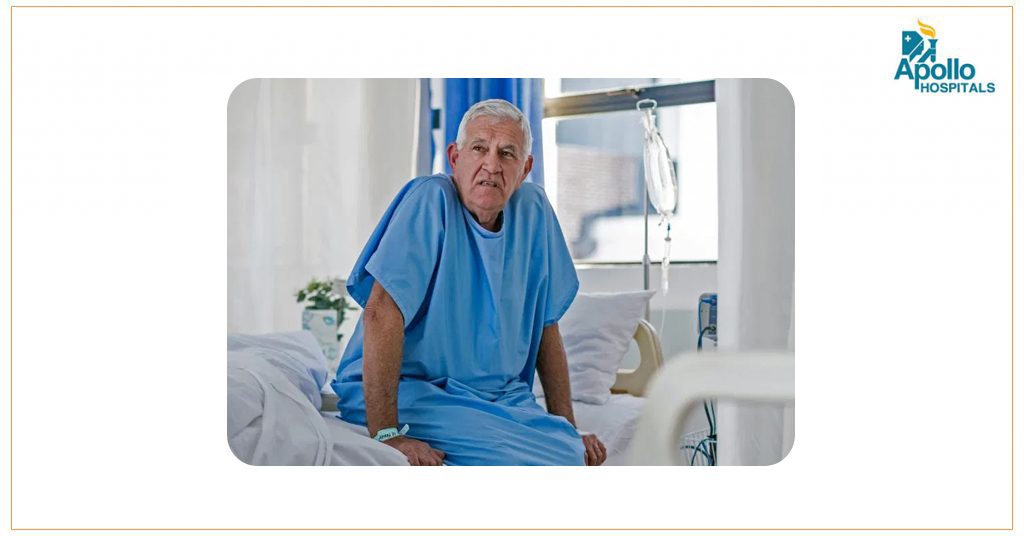Bone Marrow Transplantation
- 1500 Views
- Apollo Hospital Mumbai
- September 15, 2020
- Oncology
Bone Marrow Transplantation

The blood and bone marrow transplantation centre at Apollo Hospitals Group, India has performed over 2500 transplants with an excellent success rate.
Apollo Hospitals, Navi Mumbai is a trusted name in BMT for international patients, as the hospital has not just a highly qualified BMT team, but also very stringent infection control norms which are critical for BMT patients.
Indications for BMT
- Autologous Transplant (Stem Cells collected from one’s own body)
- Hodgkin’s & Non-Hodgkin’s Lymphoma: For relapsed / refractory cases, it is standard therapy and in most such cases, it is the only curative option
- Myeloma: Although not curative, it is standard treatment as a part of initial therapy, as it prolongs survival substantially
- Allogeneic Transplant (Stem Cells collected from someone else’s body)
- Thalassemia
- Several other genetic disorders, especially with single gene defects
- Aplastic Anemia
- High Risk Acute Myeloid Leukemia & Relapsed Acute Myeloid Leukemia
- Relapsed ALL (Acute Lymphocytic Leukemia)
- As an option in several advanced or refractory haematological malignancies eg. follicular lymphoma, CLL, myeloma etc.
Objective
The procedure serves mainly 3 purposes
- Replacing a missing gene e.g. in Thalassemia, Sickle cell disease and other such genetic disorders.
- Allows use of high doses of anticancer therapies, which may lead to loss of bone marrow. Without stem cells support, marrow will recover only after a long time, resulting in high complication rate from infections or bleeding. Infused stem cells provide early recovery of blood cells. It considerably lowers the risk of low blood counts due to marrow suppression. Thus it is one form of “Supportive Therapy” and not a treatment of cancer by itself. This is the case in Autologous (self) transplant and in majority of Allogeneic transplants
- Some “Graft versus Disease activity”, more commonly known as “Graft vs Leukemia effect” in Allogeneic transplant, especially evident in chronic myeloid leukemia
Sources
- Sources of Hematopoietic Stem Cells: Bone Marrow is the tissue that is found inside our bones. It is a spongy texture and is rich in stem cells. Bone marrow is collected from the iliac crest (hip bone) in the operating room
- Peripheral blood stem cells (PBSC): Stem cells are collected from the circulating blood stream using a process called apheresis
- Umbilical Cord Blood: The cord of new born babies is a rich source of stem cells
Process
What are Stem Cells?
Blood cells grow in the same way as other human cells. They develop in the bone marrow from a parent cell known as “stem cell”. These stem cells begin to divide and mature until they are fully developed, forming all the different types of blood cells: white cells, platelets and red blood cells. Stem cells are usually found inside the bone marrow spaces of large bones, however, they can also travel from bone to bone to other by way of blood system. A very small percentage of the white blood cells circulating through our veins are stem cells.
There is no surgery involved in Transplant, for the patient or donor. It is a very safe procedure for a donor. Nothing is lost permanently in the body e.g. as in kidney Transplant. Stem cells regenerate in few days. For the same reason there are over 1 crore (10 million) volunteer donors for stem cell transplant in USA. Stem Cells are infused into the patient through a live Blood Transfusion.
Types
The Stem Cells can be collected from patient’s own body or can be harvested from another person. This other person is known as donor.
Autologous Transplant
Stem cells are taken from the patient blood by (peripheral blood) through apheresis using special machines (peripheral) and then given back to the patient after conditioning treatment.
Allogeneic Transplant
The donor is either a relative or someone related but has a similar HLA. Stem cells are taken either by bone marrow harvest or apheresis (peripheral blood stem cells) from a HLA matched donor, usually a brother or sister. Other donors for allogeneic bone marrow transplants include the following:
- An identical twin – A syngeneic transplant is an allogeneic transplant from an identical twin. Identical twins are considered a complete genetic match for a transplant
- Unrelated transplants (UBMT or MUD, for matched unrelated donor) – The HLA matched stem cells are from an unrelated donor, usually found through the national registries
- Umbilical Cord Blood transplant – Stem cells are taken from an umbilical cord immediately after delivery of an infant. The stem cells are tested, typed, counted and frozen until they are ready to be transplanted
Stem cell transplant is an exciting area of medicine. It is a well-established treatment for several cancers and diseases of blood for the past few decades.
Steps
There are three main steps in the transplantation process.
- The first step is the collection of the bone marrow or stem cells (the harvest) from the donor. We now know that the umbilical cord blood is also a rich source of stem cells.
- The second step is to completely destroy the existing bone marrow and thereby help the patient receive the new stem cells.
- The third step is to infuse the bone marrow or the stem cells through the intravenous route, like a blood transfusion. There may be no signs of a new bone marrow growing for two to three weeks, and occasionally it may take much longer before the new bone marrow produces all the components of the blood adequately.
Preparing for BMT
Having a transplant can be very demanding, physically and emotionally. It may help if patients can talk about their fears and concerns.
It is important to understand why one is having the transplant and what the actual processes will be, so that the patient can make practical arrangements and also prepare himself or herself mentally. It is a good idea to discuss the entire process with the doctors and nurses involved, before the patient goes into hospital.
FAQs
Who can be a donor for an allogeneic transplant?
Matching the HLA of donor & patient is done by blood tests alone.It is usual to start by testing the brothers and sisters, as they are likely to provide the best match. The donor should be in good health. He or she will be given a thorough medical check-up to make sure that there will be no risk to his or her own health from the procedure.
Collecting Bone Marrow
The bone marrow harvest itself is carried out under general anaesthesia, so one will feel nothing. It involves the removal of some marrow from inside the pelvic bones. The patient or donor will have to stay in hospital overnight to recover fully from the general anaesthesia. Usually it feels sore for a few days and mild painkillers may be required. These will be administered by the nurses or doctors.
How are the pehipheral blood stem cells collected?
Stem cell harvesting is done following a course of daily injections of a growth factors. This procedure takes about 3 hours. The patient will be made to lie down on a couch and a transfusion will be put into the vein of each arm. Blood will be collected from one arm, into a machine called a centrifuge, which spins it to separate out the stem cells. These are collected, missing gene, and replacing that gene is curative and the remaining blood is returned through the IV in the other arm. The stem cells can even be frozen.
What if the Siblings do not fully match as Donors?
- Haploidentical Donors: 50% matched siblings can be considered as alternative donor
- Unrelated Donors: Donors are selected from stem cell registers (Independent after thorough work up & consent)
- January 20, 2025
Total Knee Replacement: The Role of Robotics
- January 20, 2025
Awareness and Precautions Against Human Metapneumovirus (HMPV)
- January 20, 2025
Aortic Root Replacement
- December 26, 2024
Robotic Surgery in Orthopedics
- Bone Marrow Transplant3
- Cardiac sciences44
- Cardiology1
- Child Care7
- Clinical Excellence33
- Cosmetology2
- COVID-199
- Diseases4
- Emergency10
- Emergency8
- Endocrinology1
- ENT5
- Fetal Medicine1
- Gastroenterology8
- General Medicine11
- General Surgery4
- Genomic Medicine2
- Gynecology1
- Health14
- Hematology2
- Kidney Transplant5
- Kidney Transplant2
- Liver Transplant6
- Neonatology1
- Nephrology2
- Nephrology & transplant1
- Nephrology & Urology4
- Neurosciences21
- Neurosciences1
- Nutrition/Diet1
- Obstetrics & Gynecology9
- Obstetrics & Gynecology4
- Oncology3
- Oncology93
- Ophthalmology1
- Orthopedic15
- Patient Speak1
- Pediatric Surgery4
- physiotherapy2
- Psychologist2
- Pulmonology4
- Rheumatology1
- Robotic Suregry1
- Robotic Surgery11
- Spine1
- Uncategorized111
- Urology1
- Women Care5
